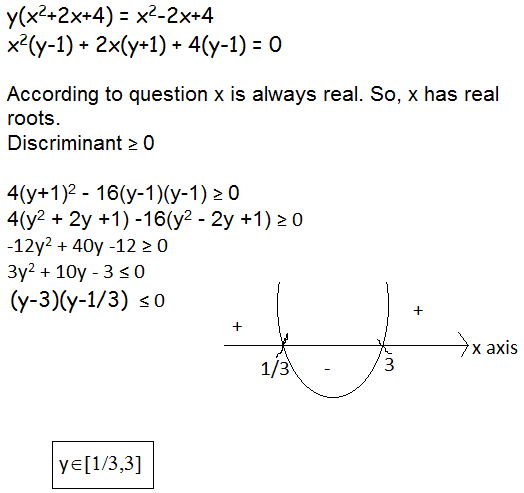Real lies where?
Let y = x 2 + 2 x + 4 x 2 − 2 x + 4 where x can take any real value then y lies in the interval of:
This section requires Javascript.
You are seeing this because something didn't load right. We suggest you, (a) try
refreshing the page, (b) enabling javascript if it is disabled on your browser and,
finally, (c)
loading the
non-javascript version of this page
. We're sorry about the hassle.
1 solution

Moderator note:
Simple standard approach.
Bonus question : Evaluate x = 1 ∏ 9 9 x 2 + 2 x + 4 x 2 − 2 x + 4 .
using calculus gives a very nice solution, dy/dx = 0 can be done by quotient rule and since denominator square can never be 0, y = 1 - 4x/x^2+2x+4 => 0 = -4(x^2+2x+4)-(-4x)(2x+2) a quadratic. However, this method gives maxima and minima which are the values of x. so the maximum and minimum value must be checked by putting above obtained values and the 2 extreme values ( both infinites) in above equation. this is much more useful when you have to find values of x for which max or min value occurs or you have a given constraint like x>3.
Bonus: need help, stuck on the way.